Aswan - Christmas 2005

The weather in England was cold, wet and grey and I really didn't feel like staying at home feeling sorry for myself on Christmas Day. I'd been searching for somewhere to go that was a little warmer than London when a company called Voyages Jules Verne sent me an email with last minute offers. One of the offers was a week in Aswan and after a moment's thought I booked it.
This trip, for want of a better word, was a 'package holiday'. The flight, hotel and airport transfers were all included and there were plenty of excursions available to book.
I arrived on Monday evening, December 19th and settled into my hotel for the night; the next morning was our chance to talk to our tour guide and 'rep' Magdy. He outlined a few things and told us about the various trips on offer; the rest of the day I spent discovering the facilities of the hotel complex. I was staying at the New Cataract hotel, a tall modern tower next to the Old Cataract hotel featured in the 1978 movie 'Death on the Nile' with Peter Ustinov.
The complex is situated on the bank of the Nile with some excellent views of Elephantine Island and it's an excellent place to take afternoon tea on the terrace and watch the sun go down. The Old Cataract has the 'posh' 1902 restaurant; the New Cataract isn't as smart but does benefit from the 24 hour Souno Cafe, currency exchange and a number of shops including a tailor, gift shop, gold shop, papyrus and spices; so it's quite possible to stay here and never even leave the hotel!
On Wednesday morning we piled into the bus for a trip to the Unfinished Obelisk, Philae Temple and the High Dam.
The unfinished obelisk is 136ft high. It would have been the largest in the world, but the project was abandoned after a flaw in the stone was discovered.
From here we travelled to the Philae Temple. This is an amazing place in so many ways, partly because of it's recent history.
The Philae Temple complex is in honour of the goddess Isis. Isis is the goddess of magic and protector of her husband-brother Osiris and their son Horus. Legend has it that Osiris was invited by his brother Seth to a feast, where Seth offered a gift of a casket to whoever it fitted. Seth had of course ensured that the casket would fit Osiris perfectly and as Osiris climbed in Seth sealed the casket and cast it adrift in the Nile. Isis found the body of Osiris, but Seth wasn't finished yet and had the body cut into 14 pieces and scattered them throughout the country. Isis hunted for her husband's body parts, reassembling them and arranging for Anubis to embalm the body. She then transformed into a bird, breathing life into her husband by flapping her wings. Their son Horus was dedicated to avenging the misdeeds visited upon his father.
Although the temple has been added to over the generations, the earliest remains are around 2400 years old.
When the British built the Aswan Dam at the start of the 20th Century, the Philae Temple island gradually became submerged under the rising Nile. For several months of the year the only way to see the temple was by cruising around the ruins and peering into the water for a glimpse of the strange world below. When the High Dam was being built in the 1960s UNESCO stepped in and rescued the temple complex, moving it to another island nearby and even sculpting the island to approximate the temple's original setting.
As you enter the complex the first thing you see is the Hall of Nectanebo, before taking in the splendour of the first pylon. On the pylon are reliefs of Ptolemy XII (the father of Cleopatra) 'smiting' his enemies.
From here you pass through the second pylon to enter the temple of Isis.
Other sights at Philae include the Temple of Augustus, the Gate of Diocletian, Temple of Hathor and Kiosk of Trajan. Definitely one of Aswan's highlights, full of history and splendour.
From Philae we went to the High Dam. Built in the 1960s, the High Dam was President Nasser's dream project. Europe and the US refused to help build the dam so Soviet Russia financed the project. As a result, the dam has created Lake Nasser, increasing the area of cultivated land by around 30%. The dam also provides hydroelectric power doubling Egypt's energy supply and has finally regulated the Nile's annual flooding.
It's not all good news though. The creation of Lake Nasser meant that around 20 temples have been lost in the lake; many Nubian villages were lost and the population moved and loss of land fertility due to silt no longer being able to flow freely along the Nile creating ideal conditions for the bilharzia parasite to spread infecting the Nile waters.
Next day we took a shopping trip, something that just has to be done. After all, who doesn't have friends and family back home just aching for a souvenir of Egypt?
It's important to remember the scams, the hassles and the hustles. The first thing you'll notice is that EVERYONE is your new friend. With very few exceptions, it's actually true. The Egyptians, certainly outside Cairo, are very warm and friendly people - even if you are a walking wallet. Every horse and buggy driver will want to take you for a ride, as will every captain of the felucca sailing boats and many taxis! It's important to try and find out what an appropriate cost for these 'services' and ensure you establish the price in advance.
There are some scams, although Aswan doesn't seem to be prone to them. They usually involve the odd camel ride rip-off where you can pay up to ten times what you ought to, swapping the Egyptian £50 note you handed over for a 50 piastre note instead, and the like. It also helps to carry low value Egyptian notes like the E£1 and E£5 to hand out as baksheesh - or a tip.
Of course I shouldn't need to tell you that almost everywhere you go it's essential to haggle over the price. As an example, in the hotel one of our group was offered shirts for £70 Sterling at the tailors, he bought four and brought the price down to £25 a shirt.
The large 'government' shops that you'll see everywhere in my opinion are not recommended for shopping unless they have something you really can't get elsewhere. These shops sell gold, papyrus, perfume etc. but are not well priced. On average I found I could buy anything they had for half or one third the price in the souks around town, even without much haggling.
My personal favourites for shopping are good quality papyrus (do your research before you go), Egyptian perfume bottles (exquisitely made and coloured), items relating to the gods and goddesses (I love the Anubis statues and boxes although Bastet is pretty good too), scarves, scarabs, ankhs and so on.
I did a couple of things that I normally wouldn't even consider. On the way into town one evening a buggy driver offered me a ride. I accepted and all my plans for the evening went up in smoke. Part way through the ride into town I was offered a sweet drink, I drank a little but then my paranoia set in and I had visions of being drugged and robbed of everything I own. Then the driver offered to show me his home and I again accepted - what was I thinking? As we parked up his horse - Cinderella - in a dark alley, we walked down a narrower alley to his home. But it was all innocent friendliness. He just wanted to invite me to his home, introduce me to his brother and his young nephew, and share a little hospitality. It certainly is humbling though, you do start to realise how incredibly lucky we are with our western homes, cars, plasma TVs and wireless internet computers when you see how the Aswan locals live.
Friday was a big day - a trip to Abu Simbel! it is possible to visit by coach, but these trips start at 4am or earlier and, due to Islamic terrorist attacks on tourists in the 1990s, security and tourist safety is a priority so you must travel in a convoy with police escort. Don't let that scare you though, Egypt is probably safer than many western countries, particularly when walking alone at night (as I mentioned above).
However, I decided to fly as this meant a more reasonable start time of around 8am and just a 35 minute flight to Abu Simbel, rather than the hours of driving by coach each way.
Abu Simbel is probably the most amazing ancient sight in Egypt. Although for me it will not surpass the pyramids and sphinx at Giza in terms of sheer drama - endless books and TV programmes on the pyramids, how and why they were built and the enigma of the Sphinx - just to be able to visit Abu Simbel is a wonder.
Thanks to the High Dam and the creation of Lake Nasser, Abu Simbel was in danger of being lost forever. UNESCO stepped in and several countries helped to save this ancient site.
The site was surveyed and - in short - the entire site was cut into more than 1000 blocks and transported to a new site 213ft higher, safe from the rising waters, where it was reassembled with hardly any sign that it had ever happened.
Abu Simbel was carved out of the mountain on the Nile's west bank between 1274 and 1244 BC. The Great Temple of Ramses II has four statues of the deified Pharaoh looking over the river. A show of strength to the people in the southern reaches of his empire and a potent symbol to his enemies.
Although some of you reading this will now probably think I'm quite mad, it brought back memories of Gerry Anderson's 'Thunderbirds' TV show. Those episodes where they went out into the desert, diving into the lake to look for lost submerged ancient temples makes more sense to me now that I can see how important sites such as Abu Simbel could have been lost to the world; indeed around 20 sites were lost when Lake Nasser came into existence.
Over the centuries the temple was covered by sand until it was rediscovered in 1817. There are four excellently proportioned statues of Ramses II, seated looking towards the rising sun. One colossus is damaged and the fallen remains were placed on the ground as they were in the original location.
Royal cartouches can be found on the chest and arms, next to and between the legs of the Ramses II colossi can be seen smaller statues of his mother Queen Tuya, his wife Nefertari and his daughter Princess Meritamun.
In the centre above the entrance is a statue of the sun god Ra-Harakhty; statues of Horus line in front of the colossi.
Within the entrance is the grand hypostyle hall, a sanctuary and storerooms.
Moving on from the Great Temple of Ramses II there is the Temple of Hathor. Six large standing statues represent Ramses II and his wife Nefertari. Beside them are smaller statues of the princes and princesses.
Abu Simbel is a breathtaking site. As the Lonely Planet guide says, Ramses II must be shaking with laughter and shouting 'I told you so' to see the existence of his great temple in the 21st century AD.
After the flight back to Aswan I took some time out to explore the Fatimid Cemetery near the hotel. A great place to get away from the bustle of town without being in the hotel environment.
Saturday morning (Christmas Eve) a police escorted convoy took us to the sites at Kom Ombo and Edfu.
Our first stop, Kom Ombo, was known as the Land of Sobek after the crocodile god of the region. The Temple of Kom Ombo is unusual in that it is a dual temple, symmetrically split offering temples to Sobek and Horus. There is a small room where you can see mummified crocodiles found in a nearby cemetery.
On to Edfu and the Temple of Horus. I feel the pylon at Edfu bears a striking similarity to the one at Philae, and inside you will find the much photographed statue of Horus.
Later that day I visited Philae once again for the Sound and Light show. I was a little concerned that I wouldn't enjoy it as much as I hoped having already spent time at the site, but the show was actually much better than I expected. It was almost worth it just to see Philae at night, when our small group arrived we were practically alone on the island. As the show progresses you walk around and through the temple site, before sitting down for the climax.
Sunday was Christmas Day and I took a boat with two other travellers across the Nile to the monastery of St. Simeon and the Tombs of the Nobles. Taking a camel across the desert with my two companions I felt like one of the wise men!
Nearby is the Mausoleum of the Aga Khan. His wife oversaw the construction of the mausoleum after his death in 1957. It was once open to the public but has been closed now for many years.

The Unfinished Obelisk
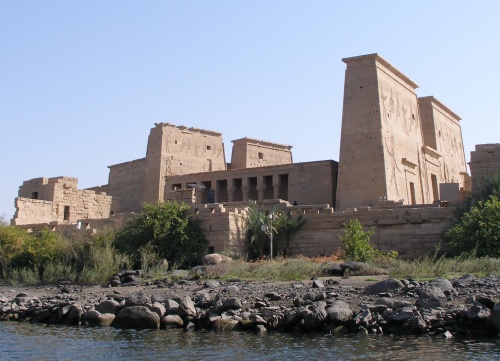
Approaching Philae Temple by boat
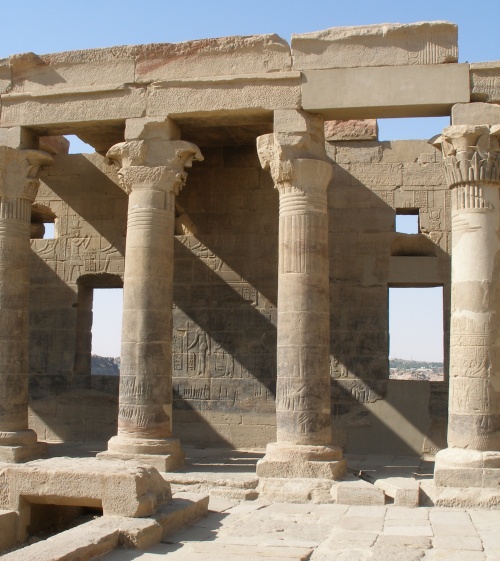
The Hall of Nectanebo as you enter the Temple complex. The black
staining
is caused by the Nile waters when the Temple was submerged.
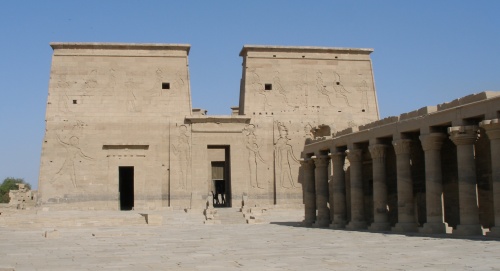
The first pylon at the entrance to the temple of Isis
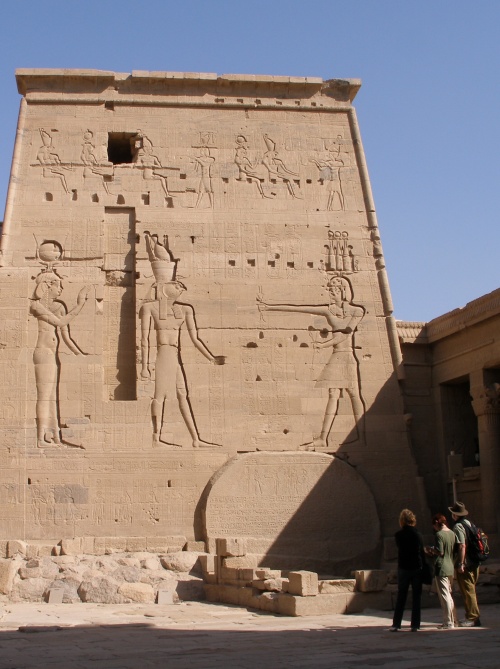
The second pylon showing reliefs including Horus, the falcon god son of Isis

The Kiosk of Trajan
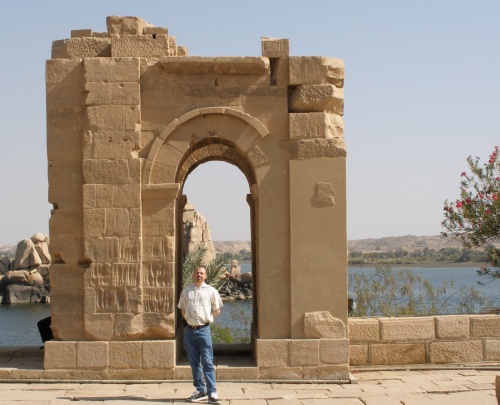
Posing by the Gate of Diocletian

Bes, the dwarf-god, frightened evil spirits and
protected woman in childbirth

Arriving at Abu Simbel and the
Great Temple of Ramses II. Looking at this photo can you understand
why it reminded me of the model sets in Thunderbirds? You wouldn't believe
it's real!

Here you can see the true scale of the Great Temple of Ramses II - notice
the guard on the left

I want a temple like this of my own some day
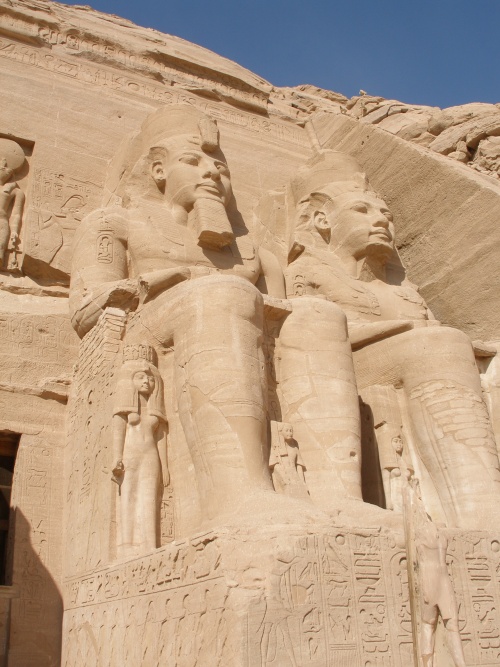
The two statues to the right of the
entrance

The Temple of Hathor

The Fatimid Cemetery
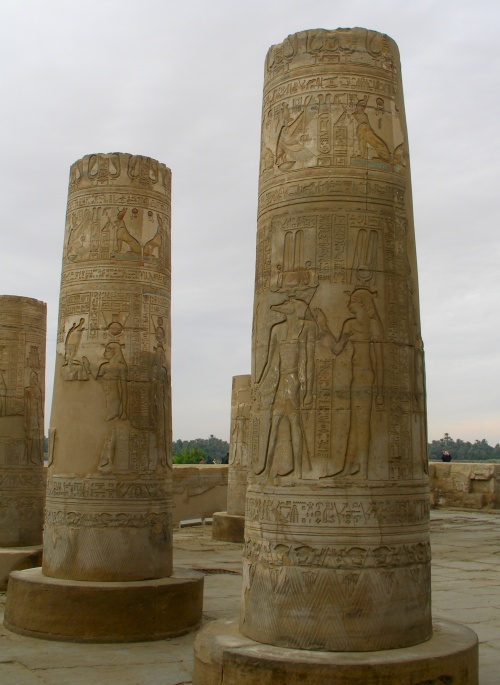
Pillars at the Kom Ombo Temple
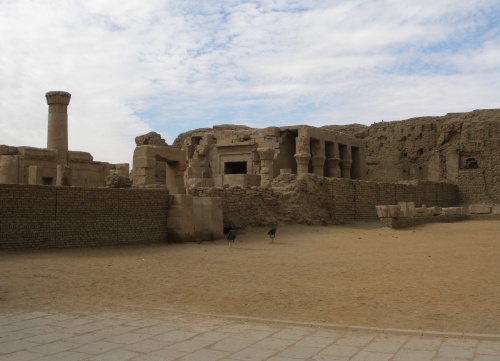
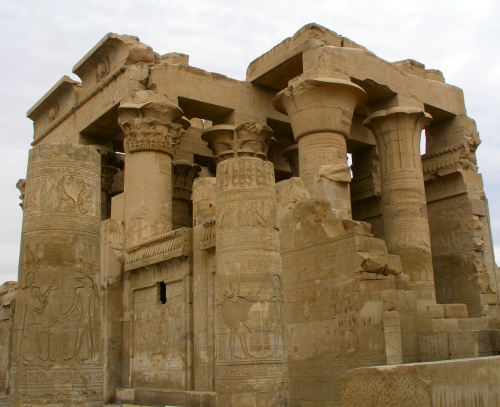
Views of Kom Ombo
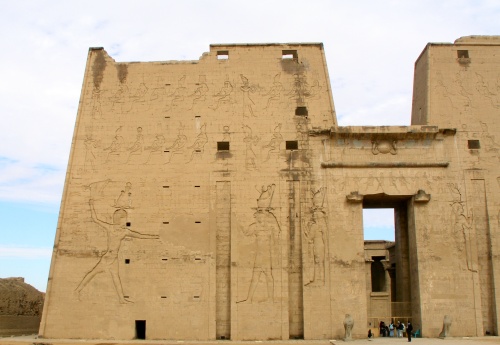
At Edfu, which bears a strong likeness to
the pylon at Philae

A statue of the falcon god Horus

St. Simeon and the tombs of the nobles
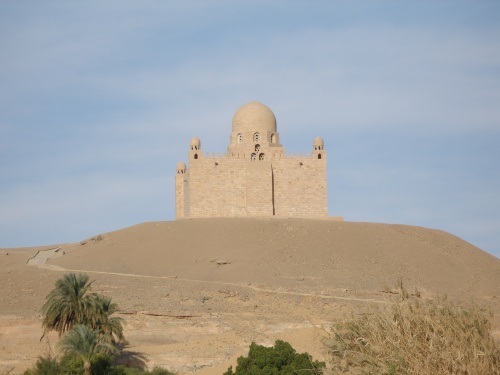
The Mausoleum of the Aga Khan